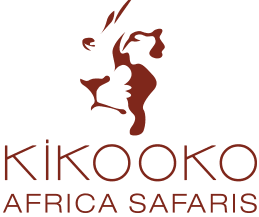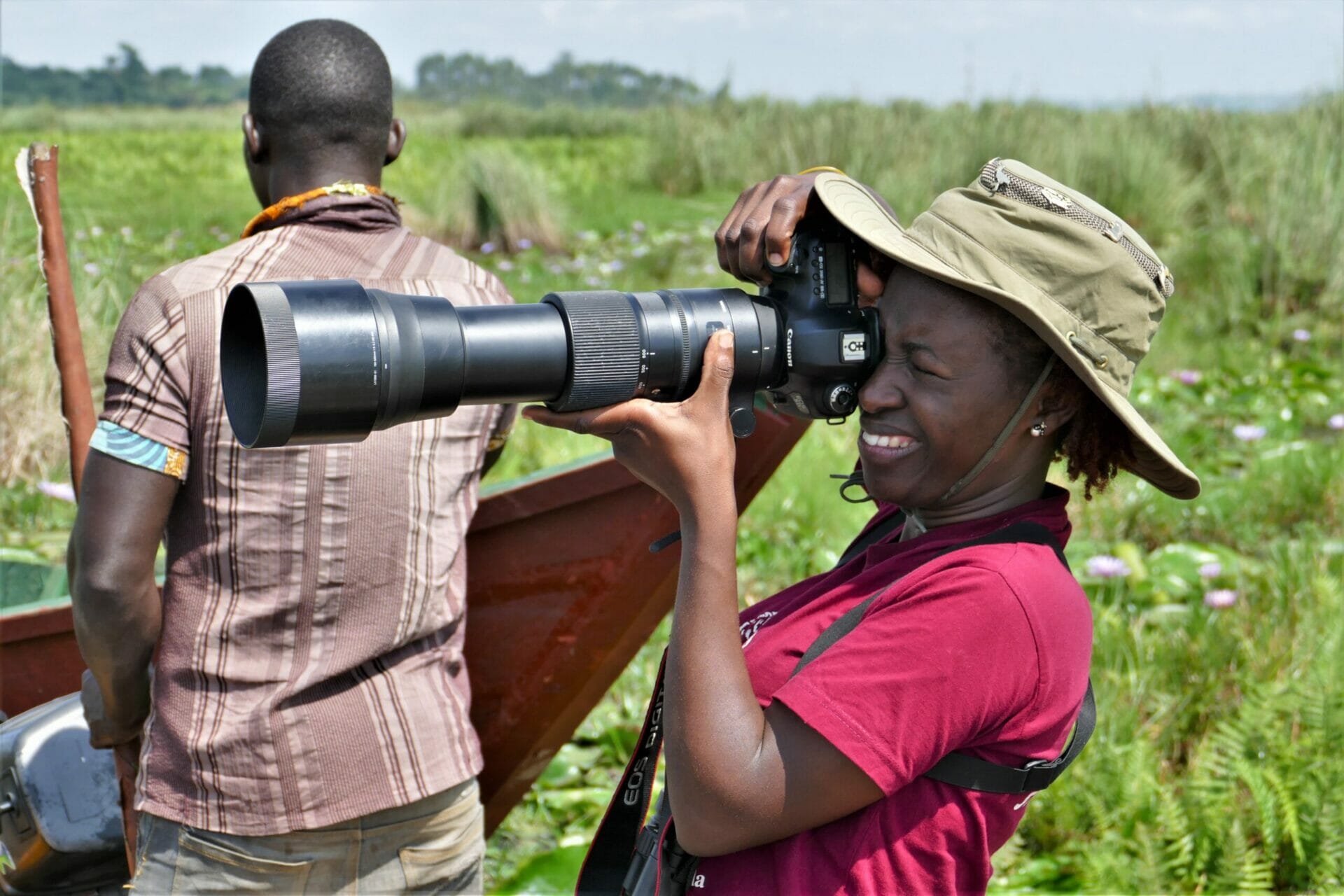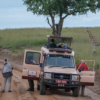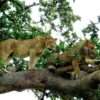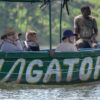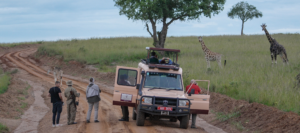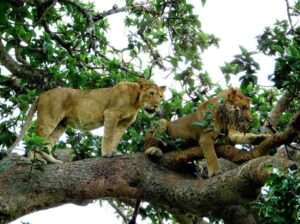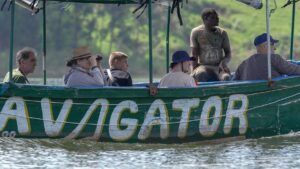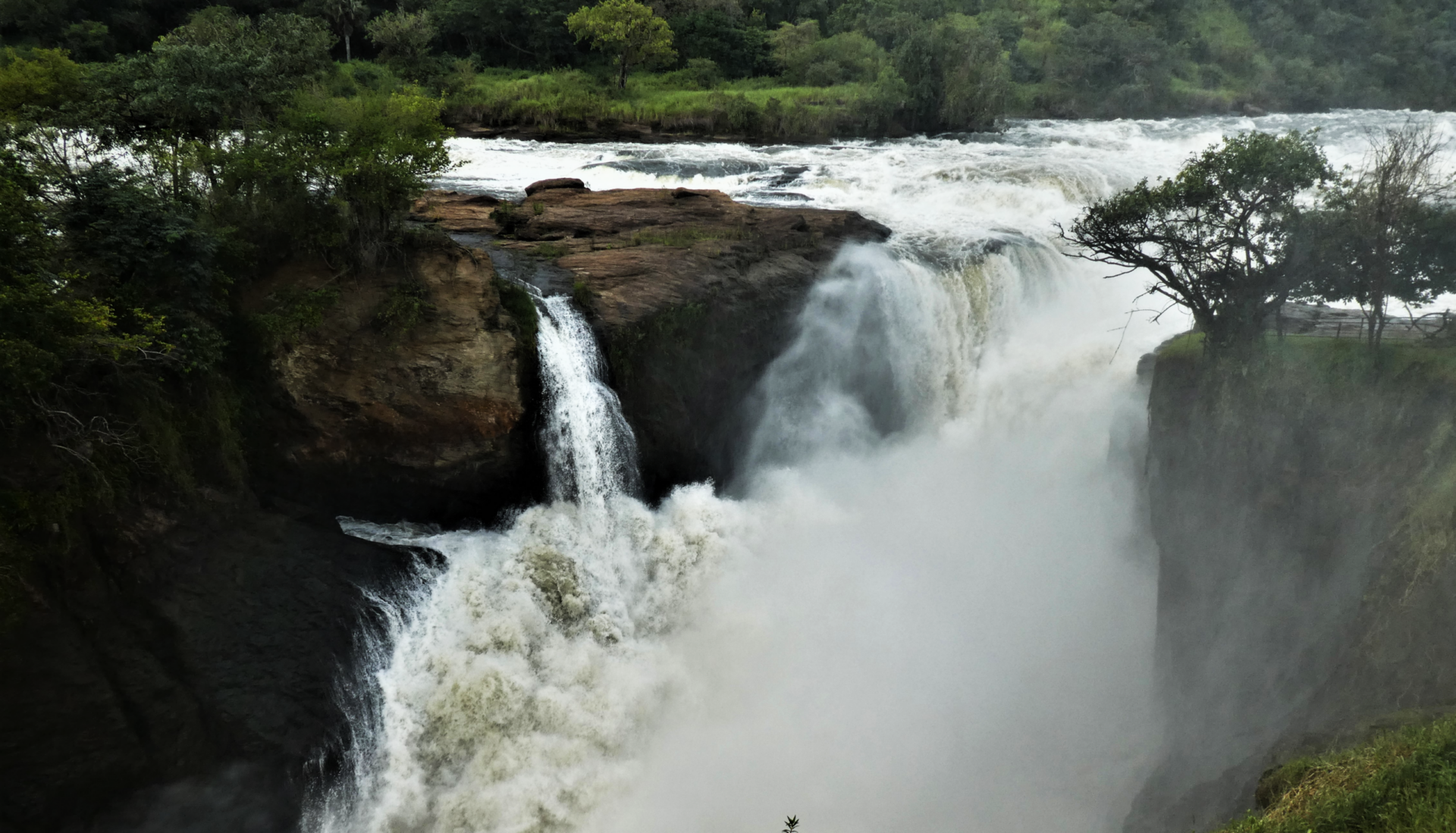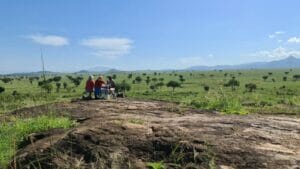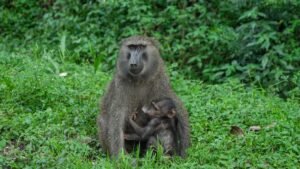If you are a wildlife enthusiast and a passionate photographer, then the idea of Africa Photo Safaris as a way to capture stunning images of the continent’s diverse wildlife is an experience like no other.
Africa, known as the cradle of life, is home to an incredible array of animals, landscapes, and cultural richness that provide endless opportunities for breathtaking photography.
Yet it’s also an enormous continent! So how can you know when to go, where to go, and what you’ll see?
As Kikooko Africa Safaris, an East Africa-based tour operator, we have more than 10 years of experience in the industry. We put together this post as a way to introduce you to Africa photo safaris.
- What are Africa Photo Safaris?
- Why Choose Africa for Wildlife Photography?
- Benefits of Joining a Photo Safari Tour
- How to Prepare for an Africa Photo Safari
- Top Destinations for Africa Photo Safaris
- Equipment and Techniques for Africa Photo Safaris
- Wildlife Photography Ethics and Conservation
- Tips for a Memorable Africa Photo Safari Experience
- Embrace the Adventure of Africa Photo Safaris
What are Africa Photo Safaris?
Africa photo safaris are specialized tours designed for photographers of all levels who wish to explore and capture the beauty of Africa’s wildlife and wilderness through their lenses.
These safaris offer a unique blend of adventure, wildlife encounters, and photography education, allowing participants to immerse themselves in the natural wonders of the continent while refining their photography skills.
Why Choose Africa for Wildlife Photography?
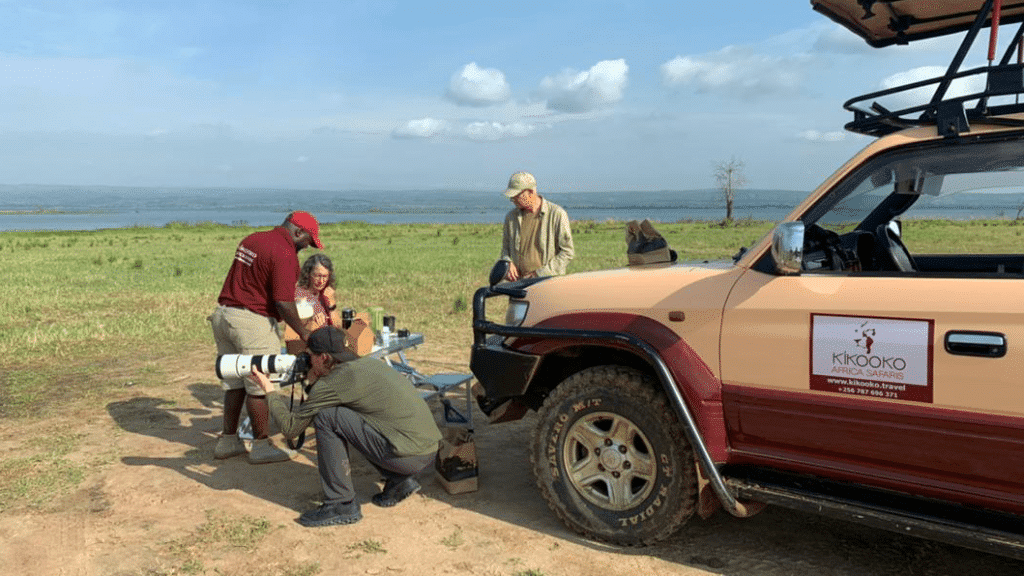
Africa is renowned for its unparalleled wildlife diversity, stunning landscapes, and unique cultural heritage. From the vast savannahs of the Serengeti to the lush wetlands of the Okavango Delta, the continent boasts a wide range of ecosystems that support an abundance of wildlife species. Whether it’s the majestic African elephants, the elusive big cats, or the vibrant birdlife, Africa provides photographers with endless opportunities to capture awe-inspiring images.
Moreover, Africa’s conservation efforts have made significant strides in protecting and preserving its natural heritage. Many national parks and reserves have implemented sustainable tourism practices, ensuring that wildlife and their habitats are safeguarded for future generations.
By choosing Africa for wildlife photography, you not only have the chance to capture extraordinary images but also contribute to the conservation and sustainable development of the continent.
Benefits of Joining a Photo Safari Tour
Participating in a guided photo safari tour offers numerous advantages for both amateur and professional photographers. These tours are led by experienced guides and professional wildlife photographers who possess extensive knowledge of the local flora, fauna, and photography techniques. By joining a photo safari, you gain access to their expertise, ensuring that you make the most of every photographic opportunity.
Additionally, photo safaris provide a structured itinerary that maximizes wildlife sightings and photographic opportunities. The guides are well-versed in animal behavior and migration patterns, allowing them to position the group in prime locations for capturing extraordinary moments. This not only saves you time and effort in planning logistics but also increases your chances of capturing that once-in-a-lifetime shot.
Furthermore, photo safaris often offer exclusive access to private reserves and concessions, providing a more intimate and immersive wildlife photography experience. These private areas often have fewer tourists, allowing for a more peaceful and unobtrusive environment to observe and photograph wildlife.
How to Prepare for an Africa Photo Safari
Embarking on an Africa photo safari requires careful planning and preparation to ensure a successful and enjoyable experience. Before setting off on your adventure, it is essential to research destinations in Africa, choose the right time of year to visit, pack the necessary camera gear and equipment, understand safety considerations, and obtain the required travel documents.
Researching destinations in Africa is crucial as each region offers unique photographic opportunities. From the iconic Masai Mara in Kenya to the vast plains of the Serengeti in Tanzania, understanding the characteristics and highlights of different destinations will help you select the one that aligns with your photography goals.
Choosing the right time of year to visit is also important, as wildlife behavior, migration patterns, and weather conditions can vary throughout the year. Understanding the seasonal changes and planning your visit accordingly will enhance your chances of witnessing remarkable wildlife events and capturing exceptional images.
Packing the right camera gear and equipment is essential for a successful photo safari. While the specific gear may vary depending on personal preferences and the type of photography you intend to pursue, a sturdy DSLR or mirrorless camera, a variety of lenses, a tripod, spare batteries, and ample storage for memory cards are some of the essential items to consider.
Safety considerations should not be overlooked when planning an Africa photo safari. Familiarize yourself with the local customs and regulations, and ensure you have comprehensive travel insurance that covers your photography equipment. Additionally, consult with your tour operator or guide regarding any potential risks or precautions to take during your safari.
Lastly, obtaining the necessary travel documents, such as passports, visas, and permits, is crucial before embarking on your African adventure. Check the specific requirements for the countries you plan to visit and ensure that your documents are up to date and valid for the duration of your trip.
In the following sections, we will dive deeper into the top destinations for Africa photo safaris, the essential equipment and techniques for wildlife photography, wildlife photography ethics and conservation, as well as tips for making your Africa photo safari experience truly memorable. So, grab your camera and join us on this incredible photographic journey through the heart of Africa!
Top Destinations for Africa Photo Safaris
Africa is a vast and diverse continent that offers an array of breathtaking destinations for wildlife photography enthusiasts. Each region presents its own unique opportunities to capture stunning images of Africa’s iconic wildlife and landscapes. In this section, we will explore some of the top destinations for Africa photo safaris, highlighting the wildlife species, the best time to visit, and the unique photography opportunities each location provides.
Serengeti National Park, Tanzania
Located in northern Tanzania, the Serengeti National Park is undoubtedly one of the most renowned wildlife destinations in Africa. The park is famous for its vast open plains, dotted with acacia trees and teeming with wildlife. It is home to the great wildebeest migration, an extraordinary natural spectacle where millions of wildebeest, zebras, and other herbivores migrate in search of fresh grazing grounds.
Photographers visiting the Serengeti have the opportunity to capture dramatic scenes of predator-prey interactions, as the migration attracts large numbers of predators such as lions, cheetahs, and hyenas. The annual wildebeest river crossings, where these animals brave crocodile-infested waters, provide exhilarating photo opportunities.
The best time to visit the Serengeti for wildlife photography is during the dry season, which typically runs from June to October. This period offers excellent visibility and a higher concentration of animals around water sources. However, it’s worth noting that the wildebeest migration timing can vary each year, so it’s advisable to consult with your tour operator to plan your visit accordingly.
Masai Mara National Reserve, Kenya
Adjacent to the Serengeti lies the Masai Mara National Reserve in Kenya. This reserve is an extension of the Serengeti ecosystem and offers similar wildlife viewing opportunities. The Masai Mara is renowned for its high population of big cats, including lions, leopards, and cheetahs, making it a photographer’s paradise for capturing these majestic predators in action.
One of the most iconic events in the Masai Mara is the annual wildebeest migration, where millions of wildebeest and zebras cross the Mara River, battling against strong currents and waiting crocodiles. This spectacle provides photographers with unparalleled opportunities to capture dramatic images of animals in motion.
The best time to visit the Masai Mara for wildlife photography is during the migration season, which typically takes place from July to October. However, the reserve also offers excellent game viewing year-round, with resident wildlife populations ensuring thrilling encounters throughout the year.
Queen Elizabeth National Park, Uganda
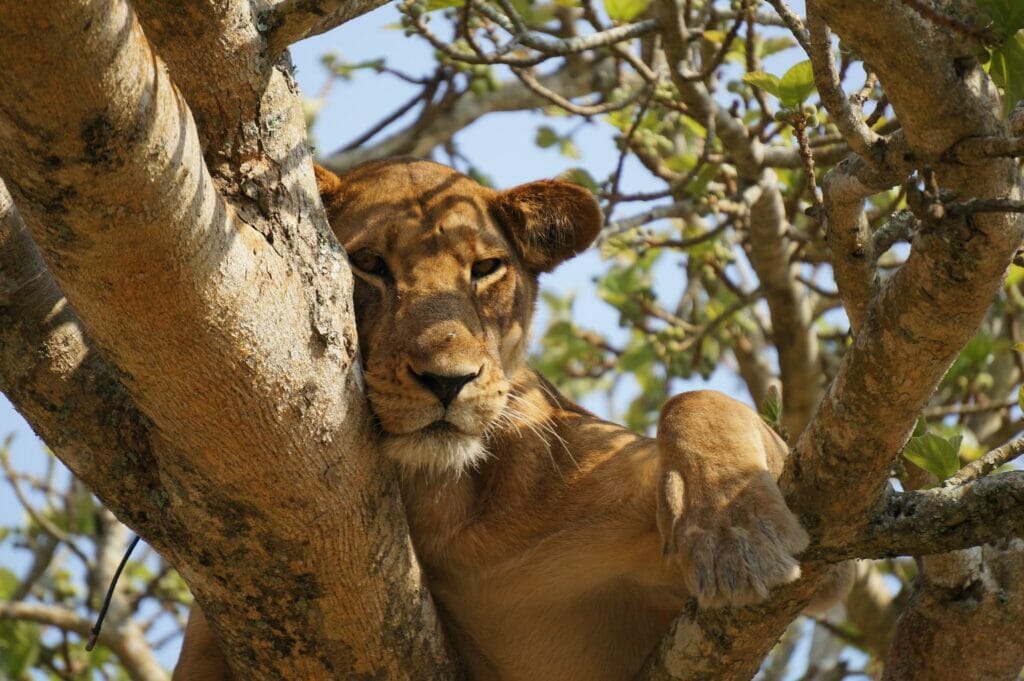
In stark contrast to the South African wilderness of Kruger National Park lies Queen Elizabeth National Park, a jewel of Uganda’s natural wonders. Situated in the western part of Uganda, this stunning national park spans over 1,900 square kilometers and offers visitors an enchanting experience in the heart of Africa.
Queen Elizabeth National Park is renowned for its diverse landscapes, ranging from lush savannahs to fertile wetlands and dense forests. This varied terrain provides a haven for an impressive array of wildlife species, making it a paradise for nature enthusiasts and wildlife photographers alike.
Similar to Kruger National Park, Queen Elizabeth is also home to the “Big Five” animals, adding an element of thrill and excitement to any safari adventure. The park’s extensive population of elephants, lions, leopards, buffalos, and rhinos ensures that visitors have an excellent chance of witnessing these majestic creatures in their natural habitat – which can all be seen on this best of Uganda tour!
Moreover, the park’s strategic location along the shores of Lake Edward and Lake George attracts an abundance of birdlife, making it a birdwatcher’s paradise. The diverse bird species, including the iconic African fish eagle and colorful kingfishers, offer fantastic opportunities for capturing breathtaking photographs.
While Queen Elizabeth National Park can be visited year-round, the dry season, typically from June to August, offers optimal conditions for wildlife photography. During this time, the vegetation is less dense, making it easier to spot animals, and the wildlife congregates around the watering holes, creating spectacular scenes for capturing stunning images.
With its unique blend of wildlife, landscapes, and cultural heritage, Queen Elizabeth National Park presents an unforgettable adventure, allowing visitors to immerse themselves in the beauty of Uganda’s natural wonders. Whether you’re a seasoned photographer or a first-time visitor, this captivating destination promises a wildlife experience like no other.
Kruger National Park, South Africa
In the northeastern part of South Africa, Kruger National Park stands as one of the continent’s premier wildlife destinations. This vast park covers an area of nearly 20,000 square kilometers, offering diverse landscapes and a wide range of wildlife species.
Kruger National Park boasts a remarkable biodiversity, with the famous “Big Five” (lion, leopard, elephant, rhino, and buffalo) calling this park home. The park’s accessibility and well-developed infrastructure make it an excellent choice for both seasoned photographers and beginners.
The best time to visit Kruger National Park for wildlife photography is during the dry winter months, from May to September. During this period, vegetation is sparse, making it easier to spot wildlife, and animals tend to congregate around water sources, providing ample opportunities for captivating images.
Okavango Delta, Botswana
Nestled in the heart of Botswana, the Okavango Delta is a unique and picturesque destination for wildlife photography. This vast inland delta is formed by the Okavango River, creating a lush oasis in the middle of the Kalahari Desert.
The Okavango Delta is renowned for its stunning landscapes, with crystal-clear channels, papyrus-lined lagoons, and palm-fringed islands. The diversity of habitats in this region attracts a wealth of wildlife, including elephants, hippos, crocodiles, and a variety of bird species.
Photographers visiting the Okavango Delta can explore the waterways in traditional mokoro canoes or take guided game drives to capture images of animals in their natural habitats. The juxtaposition of wildlife against the backdrop of serene waterways and picturesque sunsets provides a unique and captivating photographic experience.
The best time to visit the Okavango Delta for wildlife photography is during the dry season, from May to October. This period offers excellent visibility and concentrates wildlife around the remaining water sources, increasing the chances of capturing captivating images.
Etosha National Park, Namibia
Etosha National Park, located in Namibia, is a haven for photographers seeking to capture images of desert-adapted wildlife. The park’s main feature is the Etosha Pan, a vast salt pan that dominates the landscape. Surrounding the pan are grassy plains, mopane woodlands, and waterholes that attract a variety of wildlife.
Etosha National Park is known for its abundance of wildlife, including elephants, lions, giraffes, and numerous species of antelope. The stark contrast between the arid landscapes and the animals that inhabit them creates a unique and visually striking setting for wildlife photography.
The best time to visit Etosha National Park for photography is during the dry season, from May to October. Wildlife congregates around the waterholes, providing photographers with excellent opportunities for capturing interactions between animals.
Equipment and Techniques for Africa Photo Safaris
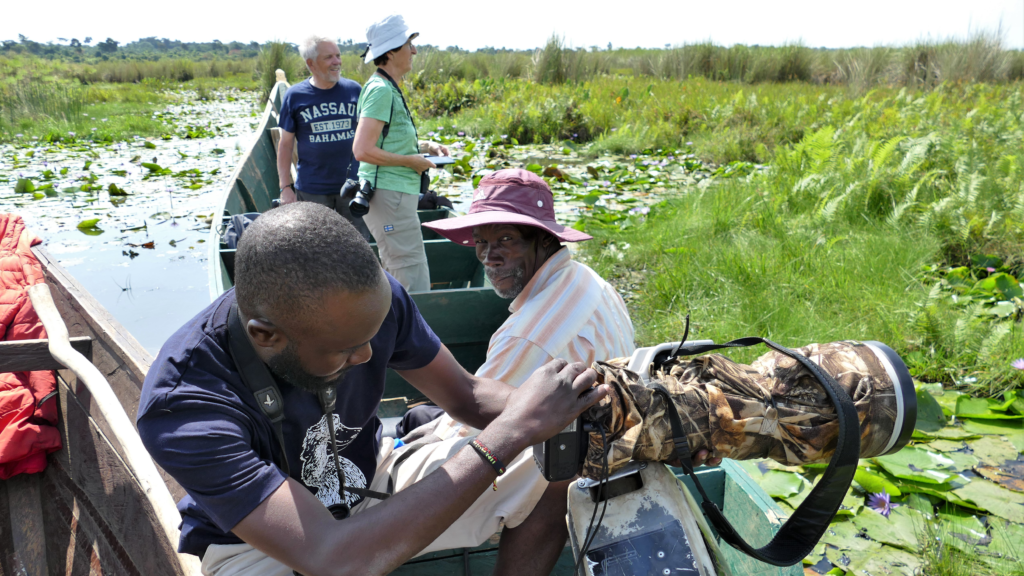
When embarking on an Africa photo safari, having the right equipment and mastering essential techniques is crucial for capturing stunning wildlife images. In this section, we will delve into the equipment needed for wildlife photography and explore various techniques to enhance your photography skills in the African wilderness.
Choosing the Right Camera and Lenses
Selecting the appropriate camera and lenses is the foundation of successful wildlife photography. A DSLR (Digital Single-Lens Reflex) or mirrorless camera with manual controls and a high burst rate is ideal, as it allows for quick and precise adjustments while capturing fast-moving subjects. Full-frame cameras are preferred for their superior low-light performance and image quality, but crop-sensor cameras can also deliver excellent results.
When it comes to lenses, a versatile telephoto lens is essential for wildlife photography, allowing you to capture distant subjects with clarity and detail. A focal length of 300mm to 600mm is recommended for most wildlife encounters. Consider investing in a lens with image stabilization to minimize the effects of camera shake and enhance image sharpness.
Additionally, having a wide-angle lens in your kit can be advantageous for capturing environmental shots and dramatic landscapes during your Africa photo safari. It provides a different perspective and allows you to showcase the stunning surroundings that wildlife inhabits.
Essential Accessories for Wildlife Photography
In addition to your camera and lenses, several accessories can enhance your wildlife photography experience and ensure you are prepared for any situation. Here are some essential accessories to consider:
Tripods and Supports: A sturdy tripod or monopod is invaluable for achieving stability and minimizing camera shake, especially when using telephoto lenses or in low-light conditions. Look for lightweight, yet robust options that are easy to transport and set up quickly.
Filters and Lens Hoods: Filters can help enhance your images by reducing glare, managing exposure, and intensifying colors. A polarizing filter is particularly useful for cutting through reflections and enhancing contrast in wildlife and nature photography. Lens hoods are also crucial to reduce lens flare and protect the front element from dust and accidental damage.
Spare Batteries and Memory Cards: Africa photo safaris can be physically demanding, and you don’t want to miss a great shot due to a dead battery or a full memory card. Always carry spare batteries and ensure you have sufficient memory card storage for the thousands of incredible images you’ll capture.
Camera Cleaning Kit: Dust, dirt, and moisture are common challenges in the African wilderness. A camera cleaning kit, including a blower, lens cleaning solution, microfiber cloths, and sensor cleaning tools, will help keep your equipment in optimal condition and ensure clear, blemish-free images.
Techniques for Capturing Stunning Wildlife Photos
Mastering specific techniques will greatly enhance your wildlife photography skills and enable you to capture truly captivating images during your Africa photo safari. Here are some essential techniques to consider:
Understanding Composition and Framing: Composition plays a vital role in creating visually compelling images. Consider the rule of thirds, leading lines, and visual balance to create dynamic and engaging compositions. Experiment with different perspectives and angles to add depth and interest to your photographs.
Mastering Exposure and Lighting: Properly exposing your images is crucial for capturing accurate colors and details. Understanding the exposure triangle (aperture, shutter speed, and ISO) allows you to control the amount of light entering your camera. In challenging lighting conditions, such as backlit scenes or high contrast, consider using exposure compensation or bracketing techniques to ensure a well-exposed image.
Tips for Photographing Animals in Motion: Wildlife is often on the move, and capturing dynamic shots requires specific techniques. Use a fast shutter speed to freeze the motion and capture sharp details. Pre-focusing on the anticipated point of action and utilizing continuous autofocus (AI Servo or AF-C) can help maintain focus on moving subjects. Burst mode can be useful for capturing a sequence of images, increasing your chances of capturing the perfect moment.
Using Telephoto Lenses for Wildlife Close-ups: Telephoto lenses allow you to capture close-up shots of wildlife while maintaining a safe distance. Utilize a wide aperture (low f-stop number) to create a shallow depth of field, isolating the subject from the background and drawing attention to the animal’s features. Be patient and observant, waiting for the perfect moment to capture expressions and behaviors that tell a story.
Patience and Persistence: Waiting for the Perfect Shot: Wildlife photography requires patience and persistence. Spend time observing animal behavior and anticipating their actions. Be ready to wait for that perfect moment when the light is just right or the animal displays an interesting behavior. Patience often rewards photographers with unique and extraordinary images.
By understanding the necessary equipment and mastering essential techniques, you will be well-equipped to capture stunning wildlife images during your Africa photo safari. Remember, practice is key, so take every opportunity to refine your skills and experiment with different approaches.
Wildlife Photography Ethics and Conservation
As wildlife photographers, it is our responsibility to practice ethical behavior and contribute to the conservation efforts that protect the fragile ecosystems and wildlife populations we capture through our lenses. In this section, we will delve into the importance of responsible wildlife photography practices and highlight ways in which photographers can support local conservation initiatives.
Responsible Wildlife Photography Practices
Responsible wildlife photography practices are essential to minimize disturbance to animals’ natural behavior and habitats, ensuring their well-being and the integrity of the ecosystems they inhabit. Here are some key principles to follow:
Respecting Animal Behavior and Habitat: It is crucial to observe wildlife from a safe and respectful distance, allowing animals to carry on with their natural behaviors undisturbed. Avoid approaching too closely or causing unnecessary stress to the animals. Familiarize yourself with the specific guidelines and regulations of the park or reserve you are visiting and abide by them.
Keeping a Safe Distance: Maintaining a safe distance from wildlife is not only respectful but also crucial for your safety. Wild animals are unpredictable, and getting too close can lead to dangerous situations for both you and the animals. Use telephoto lenses to capture close-up shots while maintaining a comfortable distance.
Avoiding Disturbing Animals for the Sake of a Shot: It is essential to prioritize the welfare of the animals over getting the perfect shot. Avoid any actions that may disrupt their behavior, such as making loud noises, using flash photography too close to the animals, or encroaching on their personal space. Remember, the well-being of the animals should always come first.
Supporting Local Conservation Initiatives
Photographers can play a significant role in supporting local conservation initiatives through their actions and contributions. Here are some ways you can contribute:
Choosing Ethical Tour Operators and Guides: When planning your Africa photo safari, opt for tour operators and guides who prioritize responsible wildlife practices. Research their commitment to conservation, adherence to ethical guidelines, and support for local communities. By selecting operators with a strong conservation focus, you can ensure that your visit has a positive impact on the environment and local communities.
Promoting Sustainable Tourism Practices: Support sustainable tourism practices that minimize the negative environmental impact and preserve the delicate balance of ecosystems. Choose accommodations that prioritize conservation efforts, such as eco-lodges or camps that use renewable energy sources, minimize waste, and support local conservation initiatives.
Contributing to Wildlife Conservation Organizations: Consider donating a portion of your photography proceeds to reputable wildlife conservation organizations. These organizations play a crucial role in protecting wildlife habitats, conducting research, and implementing conservation programs. By supporting their efforts, you contribute directly to the long-term conservation of the species and habitats you photograph.
Remember that as photographers, we have the power to inspire others and raise awareness about the beauty and importance of wildlife and the environments they inhabit. By practicing responsible wildlife photography and supporting conservation initiatives, we can help preserve these incredible creatures and their habitats for future generations to enjoy.
Tips for a Memorable Africa Photo Safari Experience
An Africa photo safari is not only about capturing incredible wildlife images but also about immersing yourself in the beauty of the continent and creating unforgettable memories. In this section, we will provide you with some valuable tips to ensure that your Africa photo safari experience is truly memorable.
Hiring a Knowledgeable and Experienced Guide
A knowledgeable and experienced guide is an invaluable asset during your Africa photo safari. They have extensive knowledge of the local wildlife, behavior patterns, and the best photography opportunities in the area. A skilled guide can help you navigate through the wilderness, position you in optimal locations for capturing remarkable images, and provide insights into the animals and their habitats.
Before booking your safari, carefully research the tour operators and guides available. Look for those with a strong reputation, positive reviews, and a track record of providing exceptional wildlife experiences. A knowledgeable guide will not only enhance your photography but also enrich your understanding of the natural world and its inhabitants.
Making the Most of Game Drives and Walking Safaris
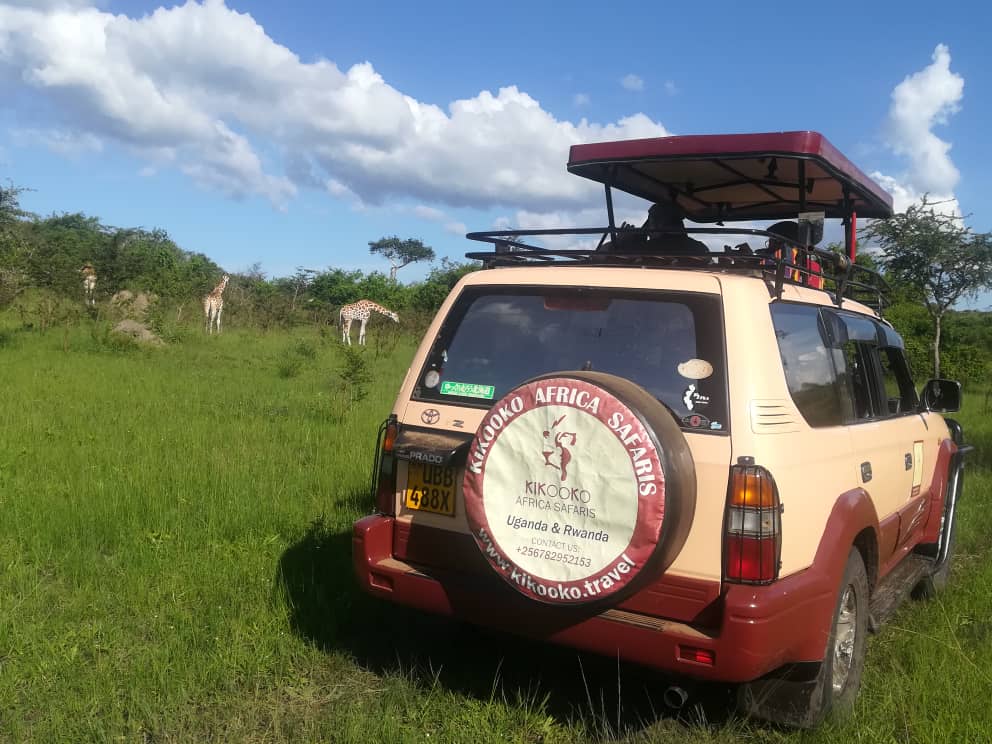
Game drives and walking safaris are the primary means of exploring the African wilderness and getting up close to wildlife. These experiences offer different perspectives and photography opportunities. Here are some tips to maximize your time on game drives and walking safaris:
– Communicate with your guide and fellow passengers about your photography goals and preferences. This will help guide them in positioning the vehicle for optimal photography angles and lighting conditions.
– Be patient and observant. Scan the surroundings and anticipate wildlife behavior to capture unique moments.
– Utilize the golden hours of early morning and late afternoon when the light is soft and golden, creating a magical atmosphere.
– Experiment with different compositions and focal lengths to capture a variety of shots, from wide-angle landscapes to close-up animal portraits.
– Listen attentively to your guide’s instructions regarding safety and movement in the presence of wildlife.
– Be mindful of your surroundings and follow your guide’s lead in terms of behavior and noise levels.
– Focus on capturing intimate details and unique perspectives, such as tracks in the sand, textures of plants, or small animals that may not be easily visible from a vehicle.
– Take advantage of the opportunity to photograph wildlife from ground level, offering a different and more immersive perspective.
Capturing the Essence of African Landscapes
While wildlife photography takes center stage during an Africa photo safari, don’t forget to capture the breathtaking landscapes that serve as a backdrop to these incredible animals. Africa offers diverse and stunning landscapes, from vast savannahs to lush wetlands and dramatic mountain ranges. Here are some tips for capturing the essence of African landscapes:
- Scout for unique vantage points that showcase the vastness and beauty of the landscape. Look for elevated areas, viewpoints, or water bodies that can add interest and depth to your images.
- Utilize wide-angle lenses to capture the expansive landscapes and include elements such as trees, mountains, or rivers to provide a sense of scale.
- Pay attention to the quality of light, as it can dramatically enhance the mood and atmosphere of the scene. Experiment with different times of the day, including sunrise and sunset, to capture warm, golden hues.
- Incorporate elements of wildlife into your landscape shots to add storytelling and create a sense of place. This could include animals grazing, birds in flight, or animal tracks leading into the distance.
Interacting with Local Communities and Cultures
Africa is a continent rich in diverse cultures and communities. Engaging with local people can provide unique insights into their way of life and add a meaningful dimension to your photo safari experience. Here are some suggestions for engaging with local communities and preserving their cultural heritage:
- Seek opportunities to visit local villages or communities, respecting their traditions and way of life. Engage in meaningful conversations, learn about their customs, and seek permission before taking photographs of individuals.
- Support local artisans and craftsmen by purchasing their handmade crafts and products. This contributes to the local economy and helps preserve traditional skills and knowledge.
- Consider participating in community-based tourism initiatives, where locals offer guided experiences or homestays. This allows you to gain a deeper understanding of their culture while providing direct support to the community.
Preserving Memories: Post-processing and Sharing Photos
Once your Africa photo safari comes to an end, you’ll have a collection of incredible images that capture the essence of your experience. Post-processing your photos can help bring out their full potential and create stunning visual narratives. Here are some tips for preserving your memories through post-processing and sharing:
- Choose a reliable and user-friendly photo editing software to enhance your images. Experiment with adjustments such as exposure, contrast, color correction, and sharpening while maintaining a natural look.
- Consider organizing your images into a cohesive story or series that tells the story of your Africa photo safari. This can be done through sequencing, creating diptychs or triptychs, or arranging them in a visually pleasing manner.
- Share your images with friends, family, and the photography community through social media, online galleries, or even print exhibitions. Sharing your experiences and the beauty of Africa can raise awareness and inspire others to appreciate and protect wildlife and their habitats.
By following these tips, you can make the most of your Africa photo safari and create lasting memories that showcase the remarkable beauty and diversity of the continent. Remember to approach your photography with respect, patience, and an open mind, and allow yourself to be fully immersed in the wonders of the African wilderness.
Embrace the Adventure of Africa Photo Safaris
As you prepare for your Africa photo safari, remember to research destinations, pack the essential camera gear, and understand the ethical considerations associated with wildlife photography. Hiring a knowledgeable guide and making the most of game drives and walking safaris will enhance your photography experience, allowing you to capture awe-inspiring images.
Don’t forget to take the time to appreciate the stunning landscapes that surround you. Africa’s diverse habitats provide a backdrop for unforgettable images, and by capturing the essence of these landscapes, you can tell a more comprehensive story of your adventure.
Engaging with local communities and cultures will add depth to your photo safari experience. By respecting their traditions and supporting their livelihoods, you become part of a sustainable and responsible approach to tourism.
Lastly, preserve your memories through post-processing and sharing your images. By showcasing the beauty of Africa’s wildlife and landscapes, you can inspire others to appreciate and protect these incredible natural treasures.
For questions about planning an Africa photo safari, or for help booking yours, feel free to reach out to Kikooko Africa Safaris today.
